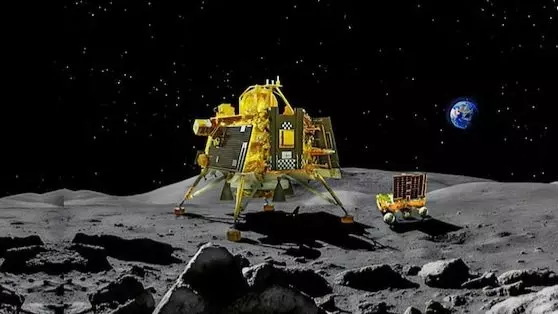
Chandrayaan-3: It’s a new day on Moon; ISRO will try to ‘wake up’ lander, rover
The probability that they will be revived is not very high because they were not designed to withstand the extremely frigid temperatures of the lunar night

The lunar night is over and a new day has dawned on the Moon. The scientists at the Indian Space Research Organisation (ISRO) will try to “wake up” the Vikram lander and Pragyan rover of Chandrayaan-3 at the Shivshakti Point on the Moon on Thursday and Friday (September 21–22).
The probability that they will be revived is not very high because the solar-powered modules had a mission life of one lunar day (equivalent to 14 days on earth). They were not designed to withstand the extremely frigid temperatures of the lunar night, which could drop below -200 degrees Celsius, especially near the poles.
There have been other spacecraft that have managed to survive such low temperatures. For example, China’s Chang’e 4 robotic spacecraft in 2019 revived after withstanding temperatures of about -190 degrees Celsius, but it was equipped with Radioisotope Heating Units (RHUs) which make sure that the temperature in the craft is maintained at a level needed for the effective functioning of the devices irrespective of the outside temperature. But Chandrayaan-3 does not have these heating devices.
ISRO officials said that before the equipment on both the modules were put to sleep before the lunar night began, the solar-powered batteries were left charged, and the solar panels on both the modules were positioned in such a way that they would receive sunlight at dawn.
The main mission objectives of Chandrayaan-3 have been achieved, and if the lander and rover can be revived and start transmitting data again, it would be a bonus. Both the modules could hopefully operate for another lunar day (14 earth days). Already, the data that has been obtained by Chandrayaan-3 about the Moon’s composition and environment is very enriching, including a temperature profile of the moon’s top soil near the South Pole.
ISRO revealed that they were able to make the lander module do a “hop experiment” just before it was put to sleep – it was made to jump about 40 cm from the moon’s surface, and it landed safely a little away from its original location. This demonstrated the scientists’ capability to restart the lander’s engines and to produce the thrust needed to lift it off the surface, even if only for a short distance. This could be crucial for future missions that could involve the lander returning to earth with samples from the moon.

